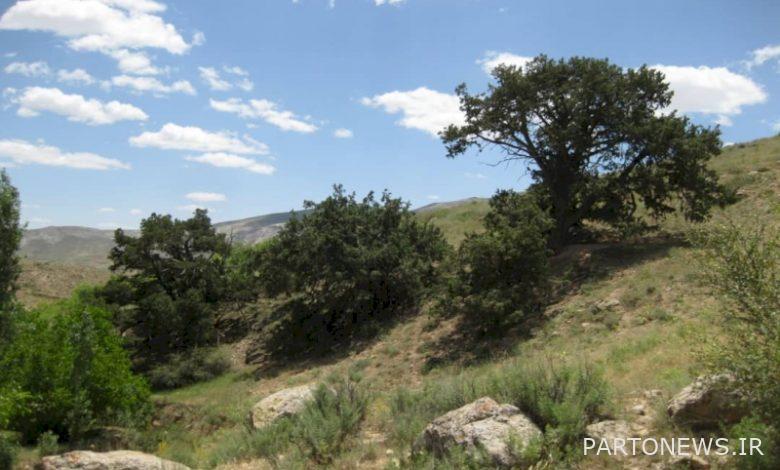Aras Archli habitat, a treasure trove of ancient trees in North Khorasan

This habitat consists of four juniper trees that are located between two hills and on the slope of one of these hills. There are orchards around this massif and on the eastern side. The distance between the two hills is separated by a canal. There is a spring on the northeast side of these trees, the water of which is drawn by a pipe up to 50 meters away from the trees. Mostly during the rainy season, ie in late winter and early autumn, water flows into the canal.
The oldest of these masses is very large and the rest are less than one meter in diameter. The first, second and fourth pillars have a single trunk, but the third pillar of this complex has three branches from the place of Ben, one of the branches of which was broken due to a storm and is located on the ground towards the slope of the slope.
The first base, which is older than the others and has a larger diameter, is the first tree that attracts a lot of attention. The diameter of this base is about 160 cm. Its large branches branch around and fall to the ground at the top of the hill. Traces of antiquity are well visible on it as a hollow created inside the trunk that can be seen from the west side of the tree. This rootstock suffers from dehydration and its symptoms are dry branches on the main branches. Also, due to old age, this rootstock has fewer seeds than other rootstocks.
At a distance of six meters east of this tree, there is a shallow water canal, the roots of which are visible on the wall of the canal. The rest of the bases are located to the north and northwest of the first base. The diameter of these pedestals is less than one meter, they are all healthy and fresh, but due to their location next to the old and valuable pedestals, they can be considered as a habitat and are suitable examples for studies.
Juniper tree is one of the species that can grow in places where other species can not live due to harsh climatic conditions and soil. Due to its genetic and physiological conditions and growth in difficult areas, this tree has a short growth period per year and therefore its average annual growth rate is very short. As mentioned, this seedling is used to create green space in the mountains because it can withstand harsh conditions well. This species can easily reproduce naturally if a sanctuary is created to protect it.
Considering the identification of its ancient foundations in the region, it can be claimed that this species is a native species for this region that is well adapted to its climate and growing conditions. Therefore, if it is used to create green space for the mountains of this region and the necessary care is taken, it can live for several thousand years and cause the greenery of the environment and nature around it.
As mentioned, the area where these trees grow is called the Archley View because the trees are respected by the people of the area and are believed in local beliefs. The closed closure works can be seen in the form of various pieces of colored fabric on the thickest base of this collection.
According to local research, this complex is very important for the villagers and it is called a point of view. The thickest tree in the complex, which is also the oldest, is known as Pir and people are involved in it.
Due to its antiquity, this ancient complex has been able to adapt well to the climate of the region; Therefore, it can be suggested for propagation and breeding research for seedling production.
The formation of this area belongs to the Cenozoic, Quaternary and Holocene geological periods, which consist of debris and young alluvial deposits. Quaternary formations include loess coverings, terraces, and alluvial fans and alluvial materials, respectively. Young alluvium is a sedimentary material that covers the southern parts of the Bojnourd plain and the city of Bojnourd is built on this alluvium.
According to the researches, due to the type of climate and mountainous conditions of the region, there has been no special vegetation in the past and only the bases of the juniper tree can be seen in the distance, which is a special species of these regions. The hilly nature of the region makes agriculture rainfed. The most important biological change factor for the super-aging mass is one of the foundations and the creation of caries in its wooden trunk. Other foundations are healthy and range in age from 300 to 1,200 years.
This collection of natural works is one of the valuable old trees, which due to its antiquity and the fact that they have adapted well to the conditions of the region, are among the native trees of the region, which has been registered with the number 230 in the list of national monuments.
.

